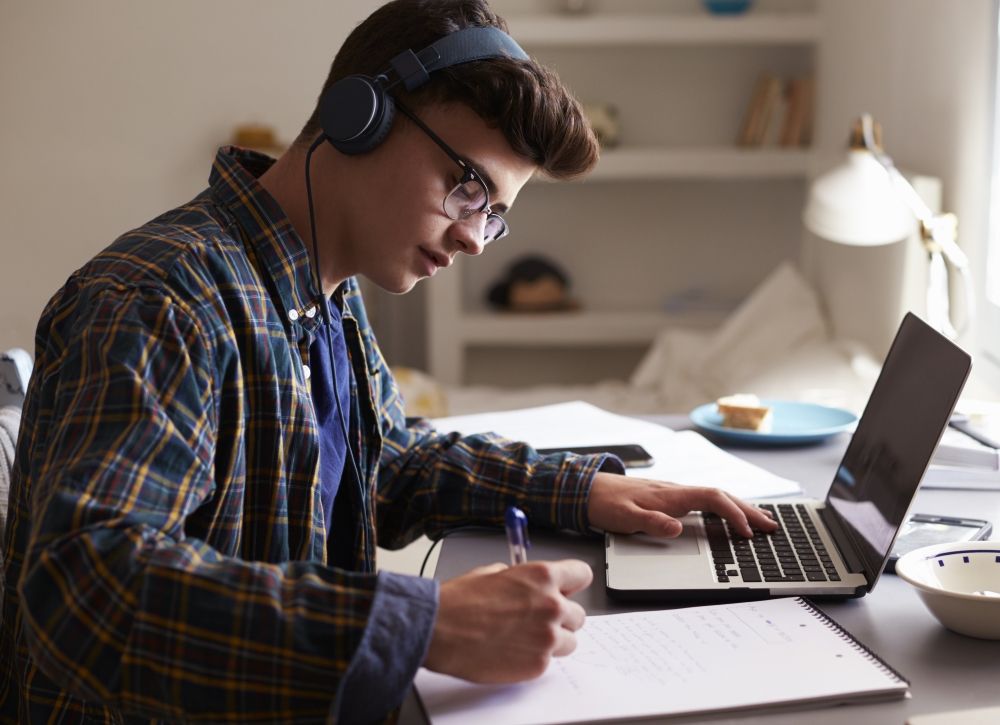
Distance Learning Solutions
The spread of the most fatal contagion of 2019 (SARS-COV2) has swiftly swept across more than 210 countries, other islands and territories. It has infected more than 1.2 million people and caused over 200,000 deaths and most importantly it has exhausted and crumbled health care systems developed and third-world countries alike. The only effective measure against the spread of this highly contagious disease is social distancing.
This sole measure has been undertaken by most effected countries across the world. Countrywide lockdowns have been imposed, leaving half of the population stranded and caged at homes, putting a halt to social life, work, education and almost anything humanly.
Many recent studies by renowned scientists revealed that the closure of schools has a meagre effect on the containment of the virus. School and university closures all together will only reduce the deaths by 2-4%. This narrative has been inspired by looking at the precedent pandemic of H1N1 2009 influenza, during this USA closed around 700 schools for 2 to 3 weeks. The #COVID -19 is different, it is here to stay – as many scientists suggest that vaccine to be working can take 8 to 9 months.
That said, many influencers suggest that education cannot be put to halt due to COVID-19 for months, and these influencers are quite right in their own space, we cannot stall our education, work and other social duties as it will take us years to become economically stable once again. Such drastic measures also have a grave impact on technological innovation and the prospects of educating the youth. For this reason, the governments must amp up their performances in providing creative alternatives that are comfortable and convenient for everyone.
The main focus of this article will be to emphasise and reiterate some of the creative and essential ways of distance learning in the times of uncertainty, this pandemic has created.
School and university closures are increasing day by day, half of the population is stranded at home, millions of students are out of school in an unserious environment. For that purpose, the 9 utmost recommendation are suggested below. These recommendations, if undertaken, can kick out any discrepancy in learning online during the period of the pandemic.
1. Examine the readiness and choose the most relevant tools
Students in the pre-corona world used to skip classes and learn the following lesson on a YouTube video. So teachers need not act alien to this feature and fear that their students will not understand what they are trying to teach through distance learning platforms or any online face to face video call.
A teacher must decide to use high and advanced technology solutions based on the availability of a poor or high-speed internet connection. College administration must ensure to provide study supplies and provide online training to teachers to enhance their skills in terms of digital work. Moreover, the teachers can decide on the use of high-technology and low-technology solutions based on the reliability of internet connection, local power supplies, and digital skills of students and teachers.
2. Ensure inclusion of the distance learning programmes
Different measures must be implemented to ensure a safe path of learning programmes for students from low-income families or disabilities. If these low-income students don’t have access to any digital devices or computers, make sure to facilitate them with computer labs’ systems in your school. Students with disabilities must be assisted by their parents or their loved ones or any professional child care worker should be hired.
3. Protect data privacy and data security
Data security is pivotal for the student’s security and also the resources of the content provided to the students. Students would have to type in their personal information in order to access the educational content. For this reason, it is crucial to take all the rudimentary measure to protect the data of the students and the educational content provided to them. Students and their families must be assured that whatever website they use to access educational content from the school or college does not violate any data privacy standards.
4. Prioritise solutions to address psychosocial challenges before teaching
Online tools are essential to connect all associated parties and it is the responsibility of school’s management to mobilise any available tools to create a platform on which students, teachers, and parents can contact each other. Certain communities must be mobilised for students to take part in, the communities will help students have social interaction, enjoy social care, and face any psychological challenges during self-isolation.
5. Plan the study schedule of distance learning programmes
It is the school’s responsibility to create and organise communities with stakeholders to discuss and examine the closure of schools and decide whether the digital learning programmes must focus on teaching students the new subjects, new knowledge or enhance their knowledge on the subjects they have studied before. The teaching schedule and duration of teaching must be decided with regards to the normal hours of school.
Schedule of online teaching can be assembled according to the level of a dire situation and that sheerly depends upon the grade of students, most affected zones, students’ needs, and parents’ availability. Schools must choose different methodologies based upon the schools’ closure duration and home-based quarantines. These can be video courses, PDFs, and other learning materials. Avoiding face-to-face communication on zoom or any other application can lead to serious consequences.
6. Provide support to teachers and parents on the use of digital tools
Teachers must be trained prior to jumping on a completely new environment of online teaching. It is the school’s responsibility to organise training sessions that help teachers understand how to teach on digital platforms effectively. If teachers are given mandates by the organisers to provide any live streams or face-to-face learning sessions then teachers must be provided and helped with basic settings such as using internet data.
7. Blend appropriate approaches and limit the number of applications and platforms
Mobilising numerous tools and other applications for students can be helpful yet confusing for most students. It is essential to provide students with only a few quality applications on which online teaching will be conducted. The applications must be of renowned ones with the best quality conference capabilities. These applications must not violate any data privacy measures and can run smoothly when live streaming.
8. Develop distance learning rules and monitor students’ learning process
Designate and confine some rules that must be undertaken by students and parents on distance learning platforms. Questions, quiz tests, and other exercises in PDF forms must be created to monitor students’ performances. Request feedback of students on distance learning, this will help teachers improve on their mistakes, and rule out any problems that obstruct a smooth online learning session.
9. Define the duration of distance learning units based on students’ self-regulation skills
Organise a strict and coherent schedule in accordance with the grade of the students. As studies reveal that students can’t focus on the studies more than 35 minutes in a classroom. For this reason, it is important to take regular intervals while teaching students on online platforms. Put simply, follow the rule of thumb, students of primary schools must be taught a unit of a subject for no longer than 20 minutes, and the students of secondary school, no longer than 40 minutes.
Now that you know the aforementioned ways to practice distance learning, we hope you’d be to implement relevant solutions. Students requiring expert coursework writing can get in touch with the professionals to get their online coursework tasks done in no time during this quarantine period.
- Comments (0)
- Recommended
- Milestones
Here are your recommended items...
Here are your milestones...




